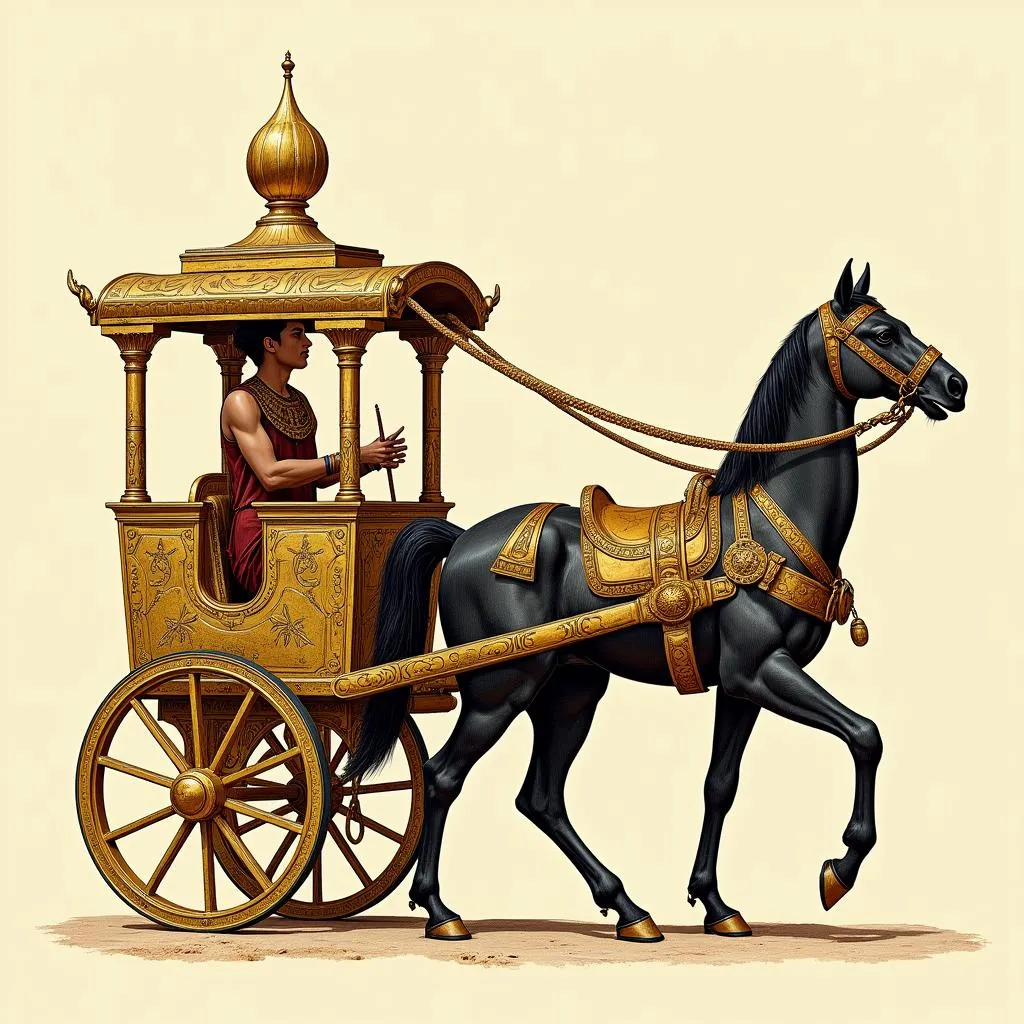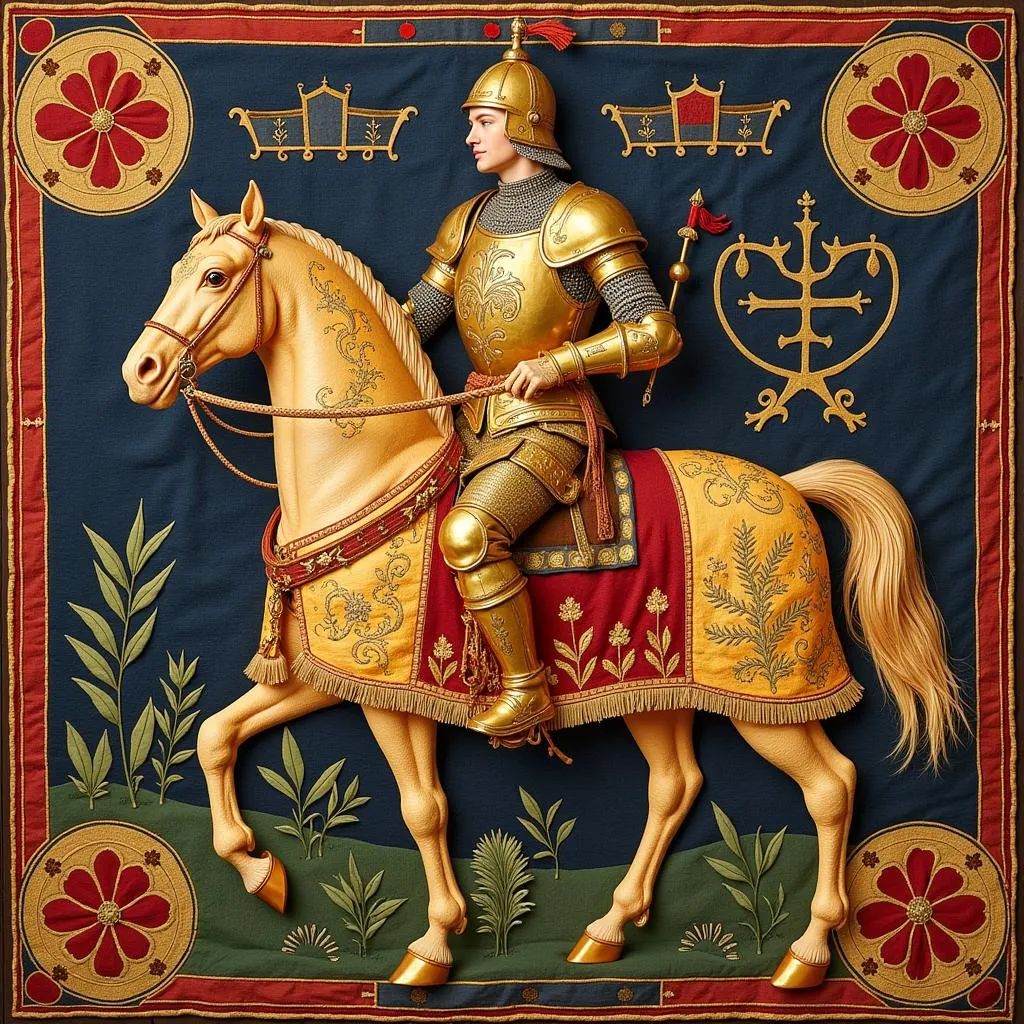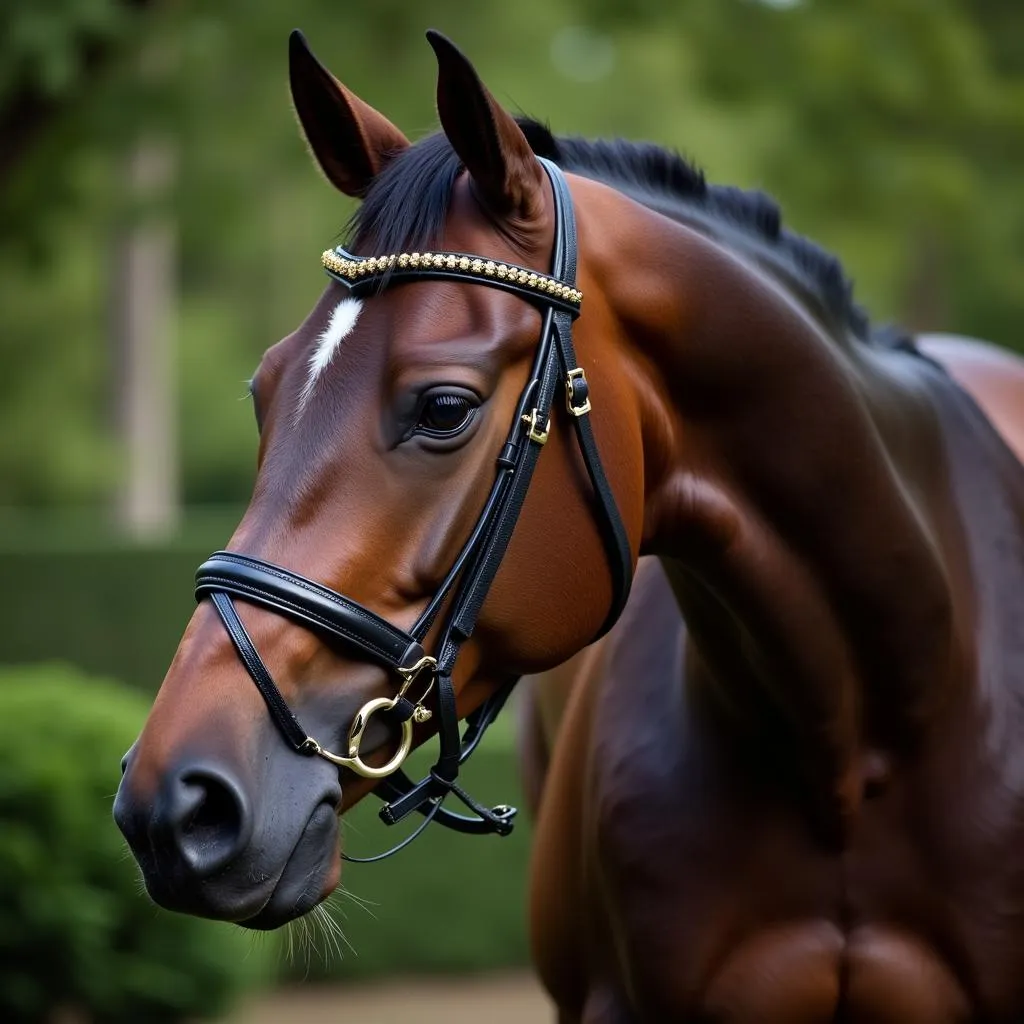The term “Horse Gilded” might evoke images of majestic steeds adorned in gold, but it encompasses a much broader spectrum of equestrian artistry. From intricately crafted tack to lavish stable decorations, the world of horse gilded is rich with history, symbolism, and breathtaking craftsmanship. In this article, we’ll delve into the fascinating history of gilding in equestrian art, explore its diverse forms and meanings, and discover how this tradition continues to captivate horse lovers today.
A Golden History: Tracing the Origins of Horse Gilded
The practice of gilding, which involves applying a thin layer of gold to a surface, dates back millennia. Ancient Egyptians, Greeks, and Romans all recognized the allure of gold, utilizing it to embellish everything from tombs and temples to sculptures and jewelry. It was only natural that this opulent material would find its way into the equestrian world.
 Ancient Egyptian Chariot with Gold Accents
Ancient Egyptian Chariot with Gold Accents
In ancient warfare, horses were not mere tools of battle; they were symbols of power, status, and even divinity. Adorning horses and chariots with gold served to elevate their importance, reflecting the wealth and might of their owners. A gilded chariot, glinting in the sunlight, would have been a sight to behold, inspiring awe and fear in equal measure.
Beyond the Battlefield: Horse Gilded in Art and Ceremony
While early examples of horse gilded often revolved around warfare, the practice soon found its place in other spheres of life. Elaborate horse tack, often featuring intricate goldwork, became a staple of royal processions and ceremonial events. Gilded sculptures of horses, both life-size and miniature, graced palaces and gardens, testaments to the enduring bond between humans and these magnificent creatures.
 Medieval Knight in Gilded Armor on Horseback
Medieval Knight in Gilded Armor on Horseback
The Renaissance and Baroque periods witnessed a flourishing of equestrian art, with gilding playing a central role. Painters and sculptors captured the beauty and grace of horses in exquisite detail, often using gold leaf to accentuate musculature, manes, and tails. These masterpieces, often commissioned by wealthy patrons, continue to inspire wonder and admiration in museums and galleries worldwide.
“The use of gold in equestrian art transcended mere decoration,” notes art historian Dr. Eleanor Vance. “It served as a visual language, conveying power, divinity, and the inherent beauty of the horse.”
Horse Gilded Today: From Subtle Accents to Extravagant Displays
While the days of gilded warhorses may be behind us, the tradition of horse gilded continues to thrive in the modern world. Today, it takes on a variety of forms, ranging from subtle accents on saddles and bridles to elaborate displays of equestrian opulence.
 Modern Show Horse with Gilded Bridle
Modern Show Horse with Gilded Bridle
For many equestrians, incorporating a touch of gold into their horse’s tack is a way to celebrate the animal’s beauty and elegance. A gilded nameplate on a halter, a delicate gold trim on a saddle pad, or a set of gleaming gold stirrups can add a touch of sophistication and individuality to a horse’s attire.
Conclusion
From ancient battlefields to modern show rings, the allure of “horse gilded” has transcended time. Whether a symbol of power, a testament to craftsmanship, or simply a way to celebrate the beauty of these magnificent creatures, the practice of adorning horses and equestrian objects with gold continues to captivate and inspire.